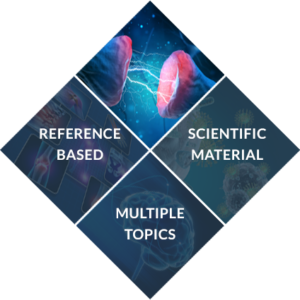Yearly All Access Pass

Yearly All Access
Get access to all 70 classes and save $$$
Over $1,300 of value
Class List
- BS1.01 The Many Models of the Chiropractic Subluxation
- BS1.02 The Brain Model of the Chiropractic Subluxation
- BS1.03 Your first visit to a Chiropractor
- BS1.04 Your first adjustment
- BS1.05 How Stress Affects your Health
- BS1.07 Spinal Function affects Brain Function
- BS1.08 Adjustments Improve Strength
- BS1.09 The Prefrontal Cortex and Cerebellum
- BS1.10 How to Explain Pain
- BS1.11 Chiropractic and Pain
- BS2.01 Introduction to the Neuroplasticity Model
- BS2.02 Two Models of the Vertebral Subluxation
- BS2.03 The Neurophysiology of the Subluxation
- BS2.04 Chiropractic Adjustments affect the Prefrontal Cortex
- BS2.05 The Impact of Stress on the Brain and Health
- BS2.06 Communicating Chiropractic’s impact on the Brain
- BS2.07 Pain is created in the Brain
- BS2.08 Understanding Chronic Pain
- BS2.09 Connection between Stress, Pain, Sleep and Mental Health
- BS2.10 The Brain, Pain and the Neuroplastic Effects of Chiropractic Care
- BS2.11 The Somatosensory Neuroplastic effects of Chiropractic Care
- BS2.12 The Motor Control effects of Chiropractic Care
- CS1.01 Communicating Chiropractic Science
- CS1.02 The Safety of Chiropractic Care
- CS1.04 Lower Back Pain and Neck Pain
- CS1.05 Headaches and Migraines
- CS1.06 The Benefits of Chiropractic Care
- CS2.01 Chiropractic Care and Lower Back Pain
- CS2.02 Chiropractic Care and Neck Pain
- CS2.03 Chiropractic Care for Headaches and Migraines
- CS2.04 The Safety of Chiropractic Care
- CS2.05 Safety of Chiropractic Care for Kids and Babies
- CS2.06 The Opioid Crisis
- CS2.07 Chiropractic Care and Stroke Risk
- CS2.08 Clinical indicators of vertebral subluxations
- CS2.09 How Often Should You See Your Patients
- CS2.11 Chiropractic Care and Colic
- CS2.12 Chiropractic Care and Enuresis
- NS1.01 Neurobiology of the Neuron
- NS1.02 Neurobiology of the Glial Cells
- RM1.01 Introduction to Research Methodology
- RM1.02 Ethics in Research
- RM1.03 Evidence-Based Chiropractic
- RM1.04 Key Research Terminology
- RM1.05 Introduction to Different Research Designs
- RM1.06 Patient-Reported Outcome Measures
- RM1.07 Introduction to Experimental Designs
- RM1.08 How to do a Literature Search
- RM1.09 Introduction to Critical Evaluation
- RM1.11 How many participants you need for your study
- RM2.01 Science and Research for the Profession
- RM2.02 A Closer look at Critical Evaluation
- RM2.03 Writing for Academic Purposes
- RM2.04 A Closer look at evidence-based Chiropractic
- RM2.05 Gathering Scientific Evidence for a Report of Findings
- RM2.06 Observational Study Design
- RM2.08 Cross-sectional Studies
- RM2.12 How to write a Case Study
- RM3.01 A Closer Look at Experimental Designs
- RM3.02 Introduction to Randomized Control Trials
- RM3.03 A Closer Look at Randomized Controlled Trials
- RM3.04 Systematic Reviews
- RM3.05 Meta-analysis
- RM3.06 Narrative Reviews
- RM3.09 Working with your Supervisor on your Research Project
- RM3.10 Writing a Literature Review
- RM3.11 Writing a Research Proposal
- RM3.12 Writing and Presenting a Research Project
- SC1.01 Introduction to Biostatistics
- SC1.02 Basic Descriptive Analysis


